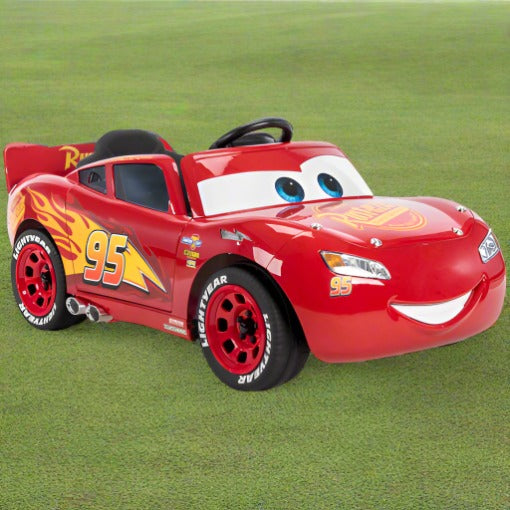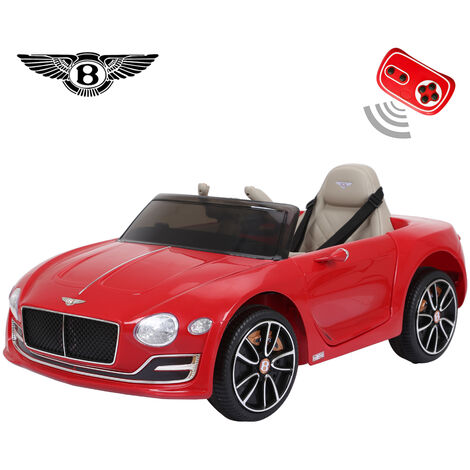The advantages and features that are offered by remote controlled cars for children are different, and meet the needs of different children and tastes. Here are a few advantages that electric and remote-controlled kids' vehicles offer.
Independence - Electric cars for kids let them drive on their own. This provides them with a feeling of autonomy and control while they move around the surroundings.
Motor Skill Development. Operating in an electric car requires children to master motor skills including the ability to steer, accelerate, or brakes. This improves coordination as well as spatial awareness.
Realistic Experience - Electronic kids' vehicles often have realistic designs, such as functioning headlights, horn sounds, and engine sounds, allowing for an immersive and enjoyable playing experience.
Outdoor Play – Electric kidscars are perfect to be used outdoors, on surfaces like roads, sidewalks and playgrounds. They allow children to play, explore and learn outdoors.
Driving an Electric Car - Children use their feet and hands to control the car's controls. This encourages physical activity and movement.
Benefits of Remote Controlled Kids' Cars
Remote-controlled cars for kids The car that is controlled by a remote allows parents to watch and supervise their child while they play. This provides an additional level of safety and control.
Guided Learning - Parents can utilize remote controls to teach their child to operate the vehicle safely before gradually moving to autonomous driving as the child gains confidence and mastery.
Children are able to operate remote-controlled cars manually or by using the parent's remote control. They are adaptable and flexible and can be used to accommodate different levels of skill and situations.
Safety - Parents who use remote control can prevent accidents and collisions, by turning the car away. This improves the safety when playing.
Remote-controlled children's cars can provide entertainment for both parents and children, since they allow children to play and have fun while learning about the car.
In the end, deciding between an electric or remote-controlled car for your child depends on many factors, including the child's age, their ability level, their preferences, and the supervision provided by parents. Electric vehicles allow for real-world play and autonomy, whereas remote controlled vehicles are safer, provide supervision and provide interactive play. Have a look at the most popular kids cars for more info including electric car ride, car electric ride on, remote control childrens electric cars, ride electric car, two seater childrens electric cars, electric rideons, pedal car, ride ons, two seater childrens electric cars, toy car and more. .

How Do You Care For And Put Together A Kid's Ride-On Vehicle?
It is normal for children ride-on vehicles to require some assembly, along with ongoing maintenance, in order to achieve optimal performance and security. Below are the typical maintenance and assembly requirements for kid's rides-on-cars.
The majority of ride-on cars are assembled, and will require assembly. This usually involves attaching the components like the wheels, steering wheel, seats, and other accessories according to the instructions of the manufacturer.
Assemble the components according to the directions. Make use of the tools and equipment to complete the assembly.
Cleaning -
To keep your ride-on car in top condition and working effectively, it's essential to clean it regularly. Make use of a soft cloth or sponge soaked in mild soap and water to wipe down the exterior surfaces, removing dirt, dust, and dust.
Be aware of places that are prone to accumulation, such as the tires, wheels, and undercarriage. Use a brush or a tooth brush to scrub areas that are hard to reach, and also remove stubborn dirt.
Avoid making use of harsh chemical cleaners, abrasive chemicals, or high-pressure water sprays, because they can damage the electronic or paint components of the ride-on car.
Battery Care
The maintenance of the battery is essential when the ride-on is powered by rechargeable batteries. Proper battery care can maintain the performance of your ride-on and extend the battery's lifespan. Use these battery care guidelines -
Charge the battery fully before first use and every time you use it to ensure that you get the maximum amount of runtime.
Overcharging the battery or leaving it connected for long periods of time can damage the battery and reduce its lifespan.
The battery for the ride-on car is best stored in a cool and dry area when not being used and away from direct sunlight or extreme temperatures.
Check the battery terminals periodically for damage or corrosion. Clean them if necessary by using a wirebrush or terminal cleaner.
Replace the battery if it does not hold an charge any longer or exhibits evidence of being damaged or degraded.
Tire Maintenance -
Always check your tires for signs that they are losing pressure, damaged or worn. If needed, inflate the tire to the recommended air pressure using a bicycle pump or compressor.
The tread pattern should be inspected for debris, foreign objects, or other obstructions that could cause flats. Replace or repair damaged tires, if needed. Remove obstructions.
Lubricate the wheel bearings and axles on a regular basis to reduce friction.
Occasional repairs or replacements
Even with regular maintenance, it is likely that vehicles with ride-ons will need to be fixed or parts replaced due to wear and tears or accidents.
Pay attention to signs of malfunction and deterioration such as unusual noises, loss of power or unusual behavior. Contact customer service or consult the manual of the manufacturer for assistance for troubleshooting.
To prevent further damage, replace worn-out or damaged components as soon as you can to ensure safety and functionality.
You can ensure that your child's rideon vehicle is in top condition by adhering to these assembly and maintenance instructions. Your child will be able to enjoy numerous hours of safe enjoyable and thrilling playtime. See the most popular read more about ride on toys for site info including toy ride, ride ons, toy a car, ride on car, remote control childrens electric cars, electric two seater cars, race car toy car, childs car toy, childs car toy, pedal car and more. .

How Do You Decide On A Budget For Your Ride-On Child's Car Purchase?
To set an appropriate budget for your child's ride-on vehicle, it is crucial to take into consideration a variety of factors. This includes characteristics, durability, and financial circumstances. Here's how you can establish a budget and discover the most value for your money - Find Average Prices
Start by comparing the prices of the different models. Online retailers, toy stores as well as manufacturer websites will provide pricing information for different models.
Choose the most important features to have Find Must-Have Features
Think about the features essential to your child's safety and pleasure. Ride-on cars with features like realistic sound effects and seat belts, remote controls and working headlights can be more expensive.
Prioritize features in accordance with the preferences of your child as well with your budget.
Take into consideration durability and length of Life -
Ride-on vehicles should be constructed of durable materials, including plastics and metals. They should be also able to endure weather conditions.
To assess the longevity and durability of various models, read reviews and ask other parents for their recommendations. A greater upfront investment in a durable ride-on car could result in savings over the long term because it will not require frequent repairs or replacements.
Compare Prices from Different Retailers -
Compare prices to get the best price. Check for sales and discounts at local department stores, toy stores and online retailers.
Keep an eye on discounts, sales or clearance sales that can help you save money on your purchase without losing quality.
Consider Additional Costs in the calculation -
Be sure to include any additional costs that you will incur when purchasing a car ride-on for your child. This includes shipping costs and taxes, as well as any additional accessories (e.g. additional batteries, safety equipment).
Budget for the total cost which includes all accessories and maintenance expenses.
Set a Budget that Is real
Set up a realistic budget in accordance with your current financial situation and research. This will help align your priorities with your goals. Calculate the maximum you're prepared to pay for a child's ride-on while considering features, durability, or longevity.
Avoid stretching your budget too thin or spending money on unnecessary items that might not provide any worth to your child's play experience.
Take into consideration the value of long-term planning Take into consideration the value over time
A children's ride-on vehicle which is robust, dependable, and able to grow with your child can be a great investment. A vehicle that is high quality and has many features can be greater over time, compared to a less expensive, less durable option.
If you set a reasonable budget and then carefully evaluate the features, durability and long-term value of each car for your ride-on child and you'll find it's worth the money. Focus on prioritizing features that matter most to your child's happiness and safety while staying within the limits of your budget. Read the recommended JCB ride on toys kidscars.co.uk advice for more recommendations including electric ride on, ride of car, toy the car, childrens electric ride on, car electric ride on, two seater childrens electric cars, race car toy car, two seater electric cars, toy the car, toy in car and more. .
